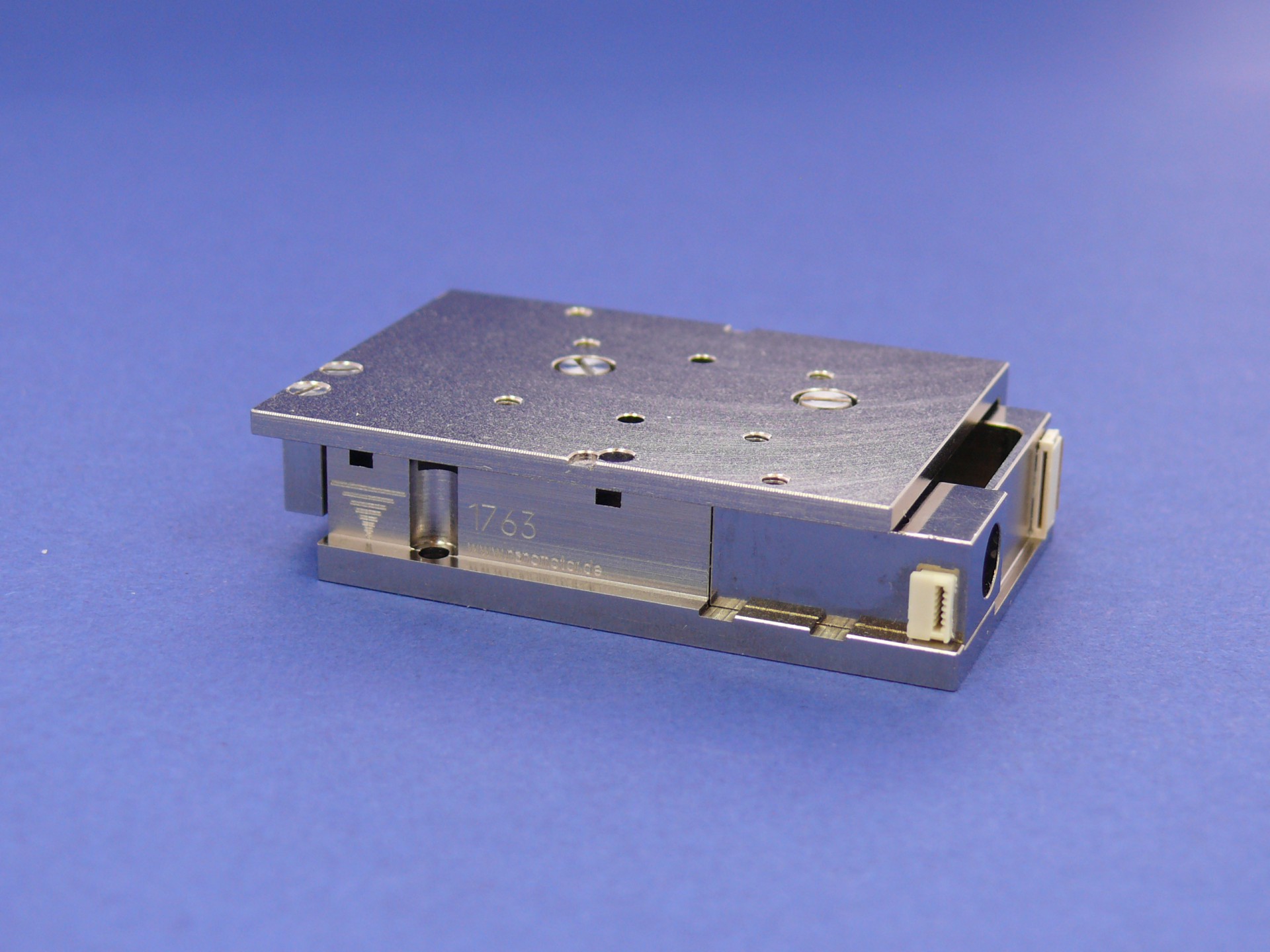A new set of motorized stages developed by Klocke Nanotechnik allows high strokes at small volumes. The modules are driven by the Nanomotor®. Loads of up to two kg can be moved over centimeters of stroke with down to 0,5 nm resolution. Manipulation in many degrees of freedom is possible without backlash. The modules NMT xx-L are longer, but thin like a pencil. In most of the NMT-modules position measurement systems can be included without increasing the size. The resolution of the position sensor is 2 nm. All NMT modules can easily be fixed onto each other. Very small connectors allow the exchange of a module without removing cables. The NMT-Zxx are modules for vertical movement. They have an internal load compensation to lift up loads. Nanomotor-Grippers and force sensors, that can easily be fixed on these modules, are available.
- 1 nm resolution
- repeatability better than 50 nm
- 5-50 mm stroke
- max. load up to 2000 g
- small dimensions
- modular system with easy handling
- vacuum compatible
- Nanomotor table NMT 10/20/30/40/50
- Nanomotor table NMT 5-L/10-L/15-L/20-L
- Nanomotor table NMT Z15/Z20
- all modules available with position measurement system PMS
Principle of operation
The primary objective during the development of these Nanorobotics modules was a resolution in movement of a single Nanometer. This is made possible in principle by the Nanomotor®, developed by Dr. Klocke and his team in Aachen. Compared with other high stroke piezo drives the Nanomotor has a real fine positioning stroke of more than a micron. Within this stroke the Nanomotor behaves exactly like a piezo, without backlash.
The combination of the Nanomotor with mechanical guiding elements like ball bearing tables or gears should also eliminate the play of the mechanical guiding element and lead to a superior movement resolution, free of any backlash. But it didn’t. The movement of a first prototype showed a kind of backlash with 50 nm amplitude in an Electron Microscope. This value is much smaller than mechanical play and too big for a piezo drive. The analysis of the whole mechanical chain in this linear stage with a high resolution Electron Microscope led to the source of this backlash. The movement of this small motorized stage caused a compression of materials used in this setup. Even the elastic constants of materials reduce the performance of this device. After this result the linear stage was developed in a new design with other materials and geometries. The backlash caused by compression could be reduced in our new high resolution stages from 50 nm down to an amplitude of below 1 nm. This is the distance of 5 atoms!
Furthermore, compared with other piezo drives the Nanomotor does not press in this design against the mechanical guiding elements from the side and so avoids additional off-axis movements. Only with the precision of the Nanorobotics modules a coarse approach and a real fine adjustment can be fulfilled in one system: The fine positioning mode has a range of more than a micron without making coarse steps – another advantage compared with other systems. For manipulation tasks in Electron or Ion Microscopes this achieved precision is essential. These Nanorobotics modules are also the key elements for the precision of our Micro Production Systems.






